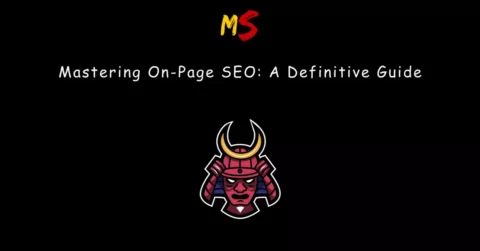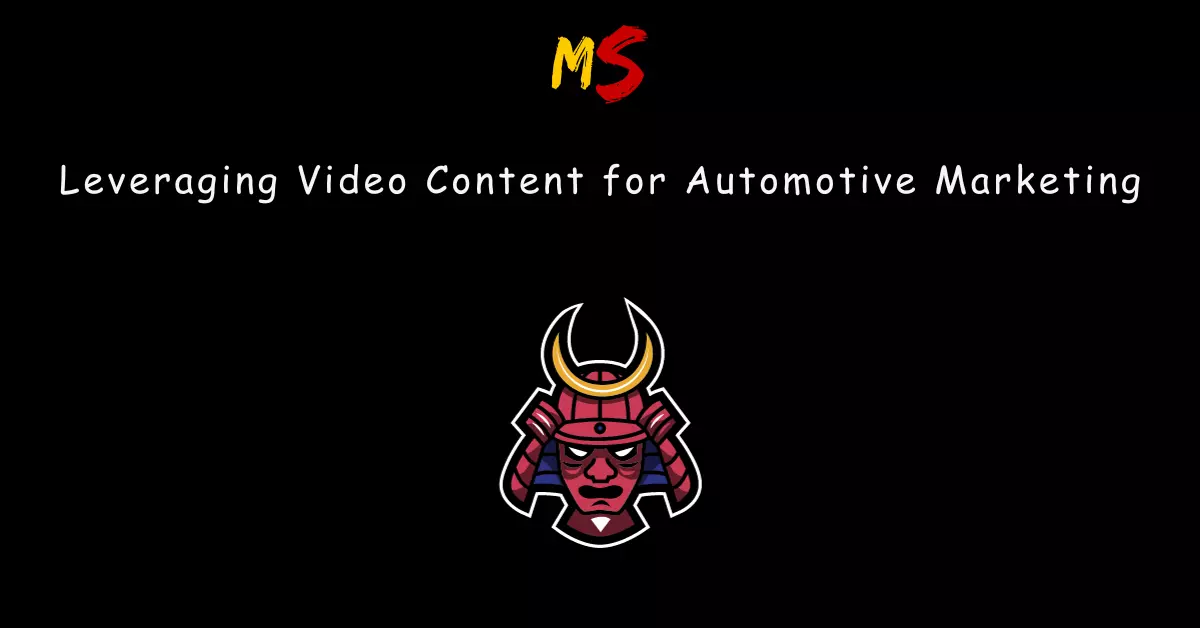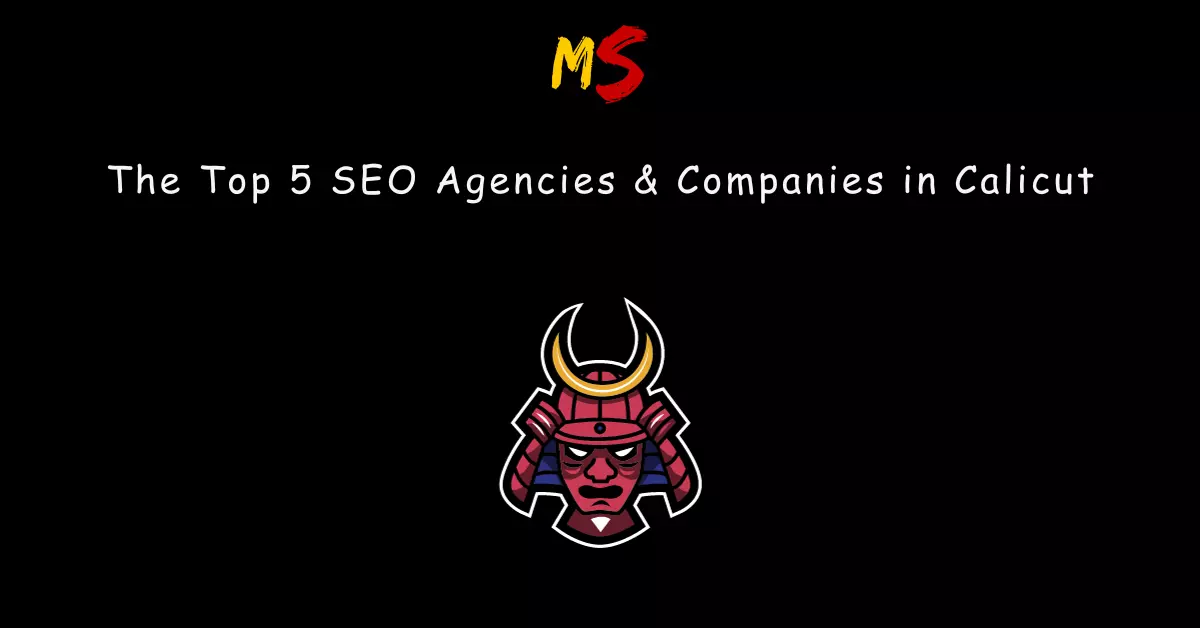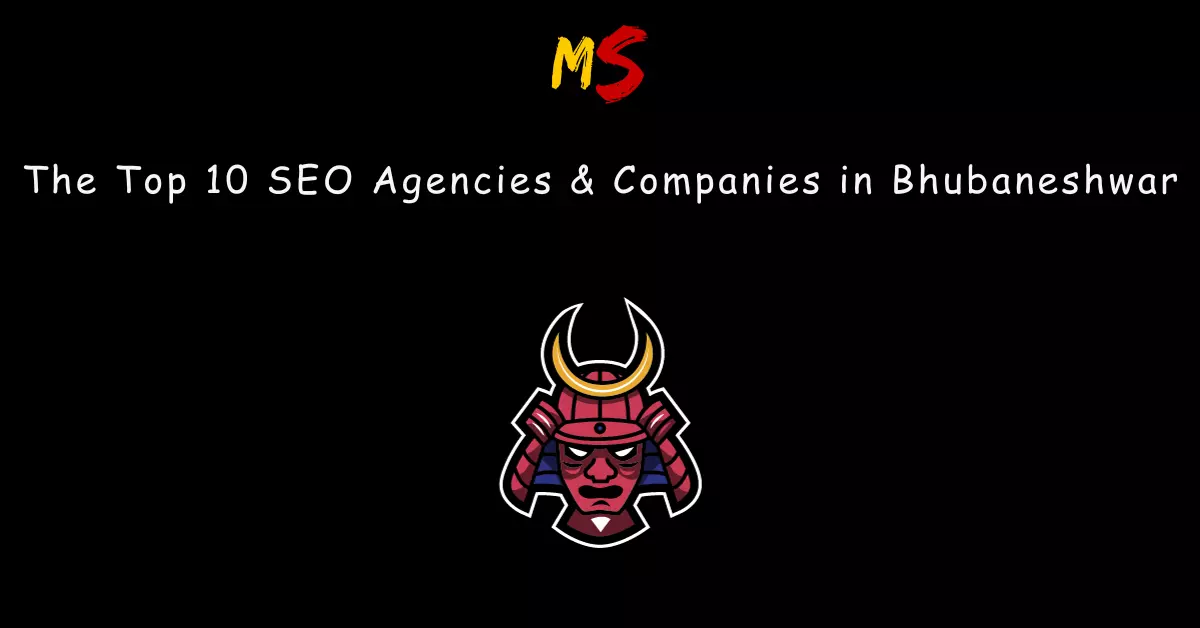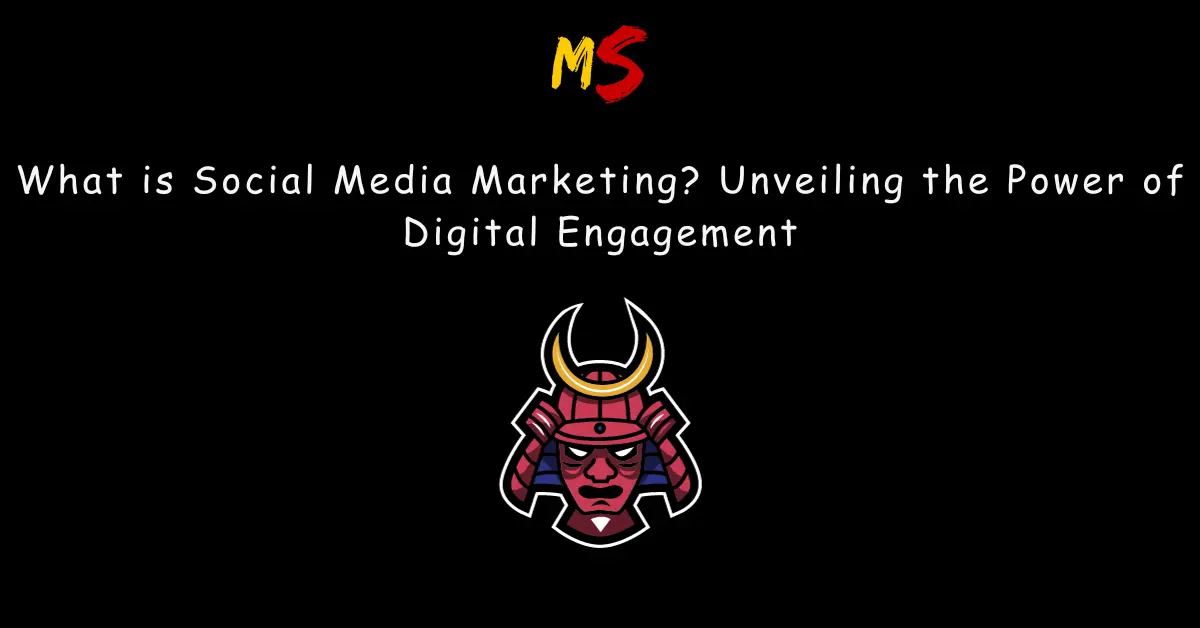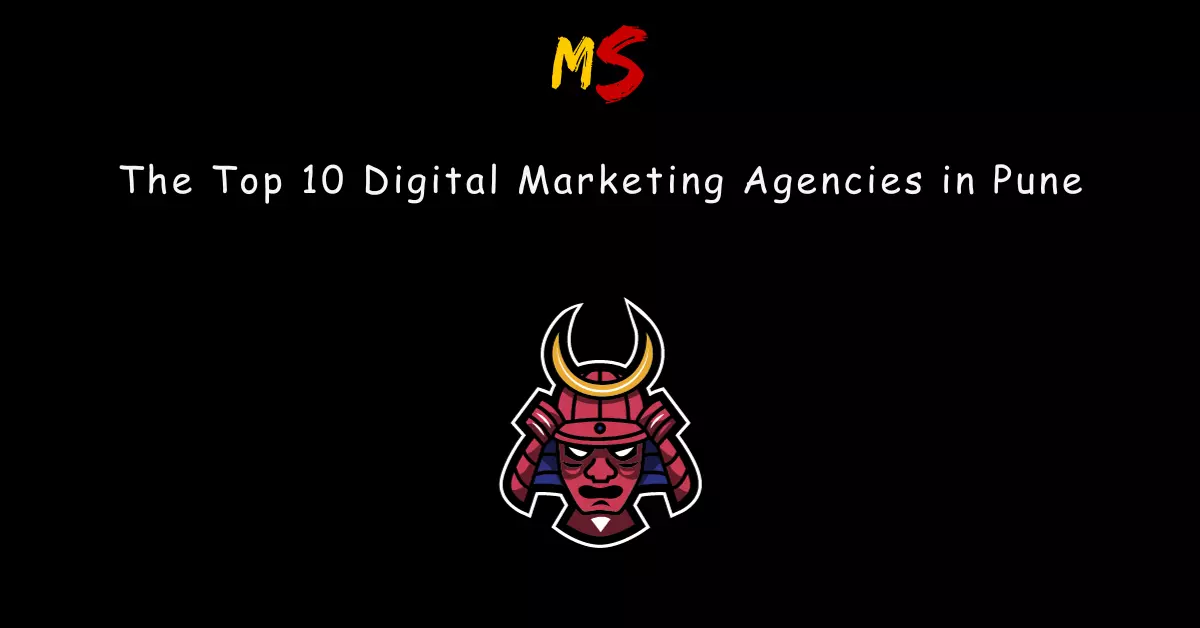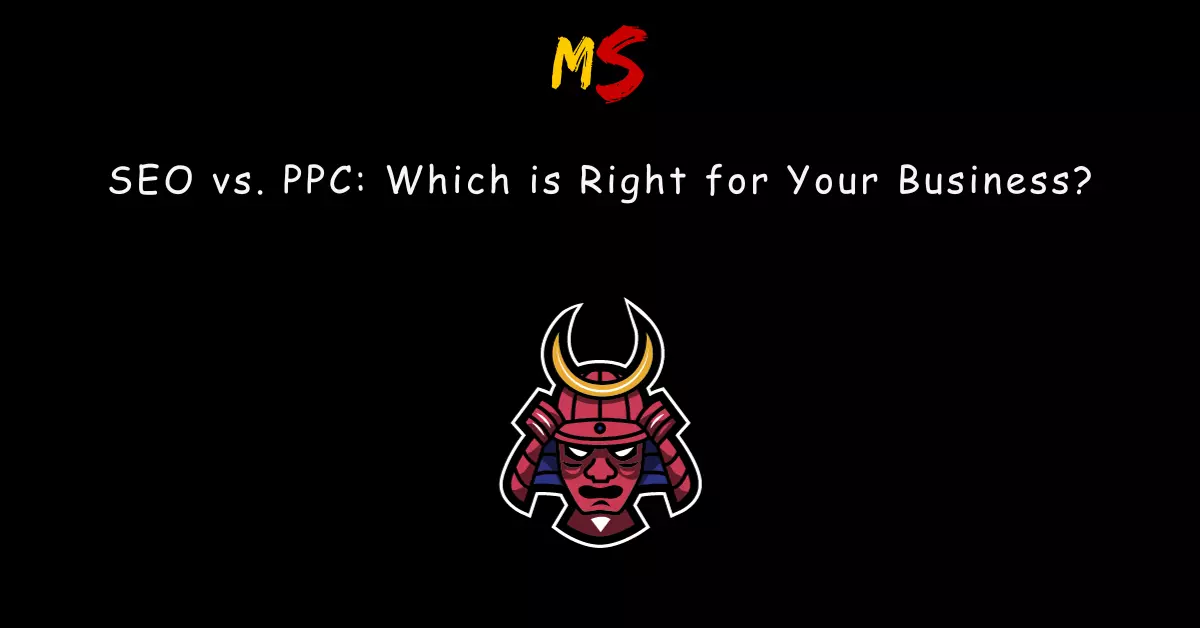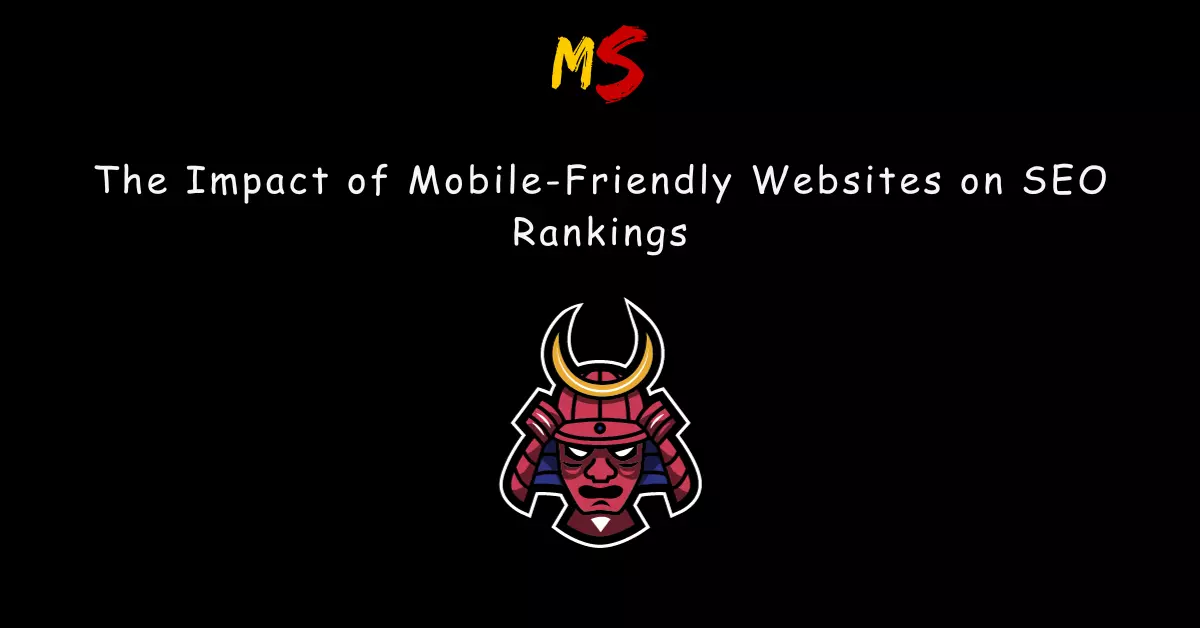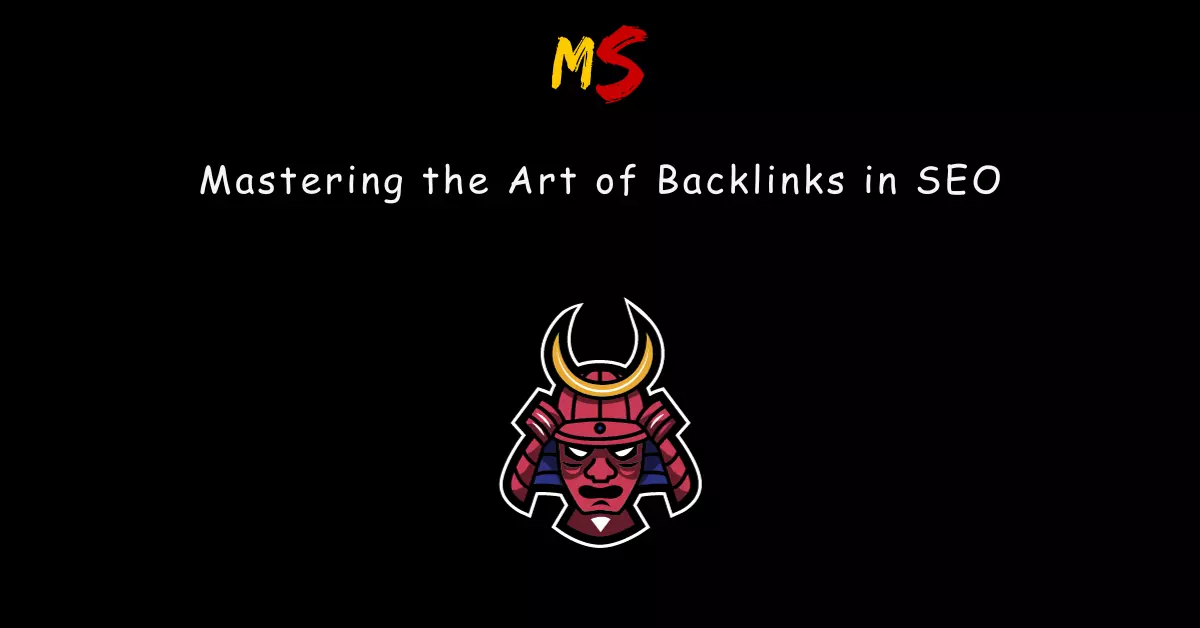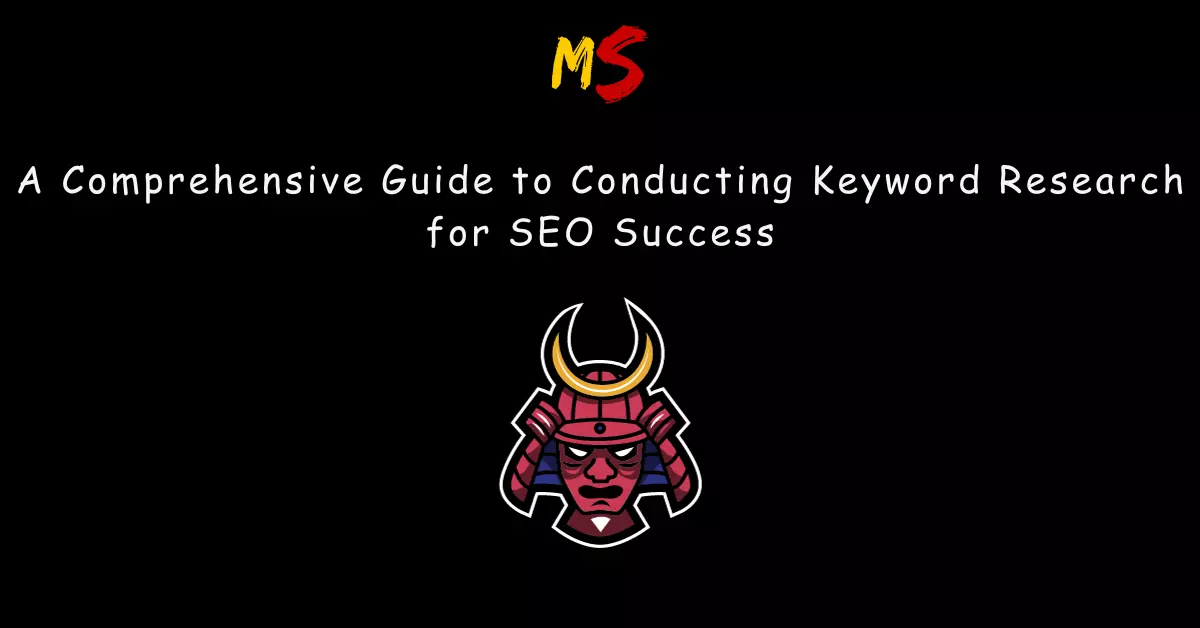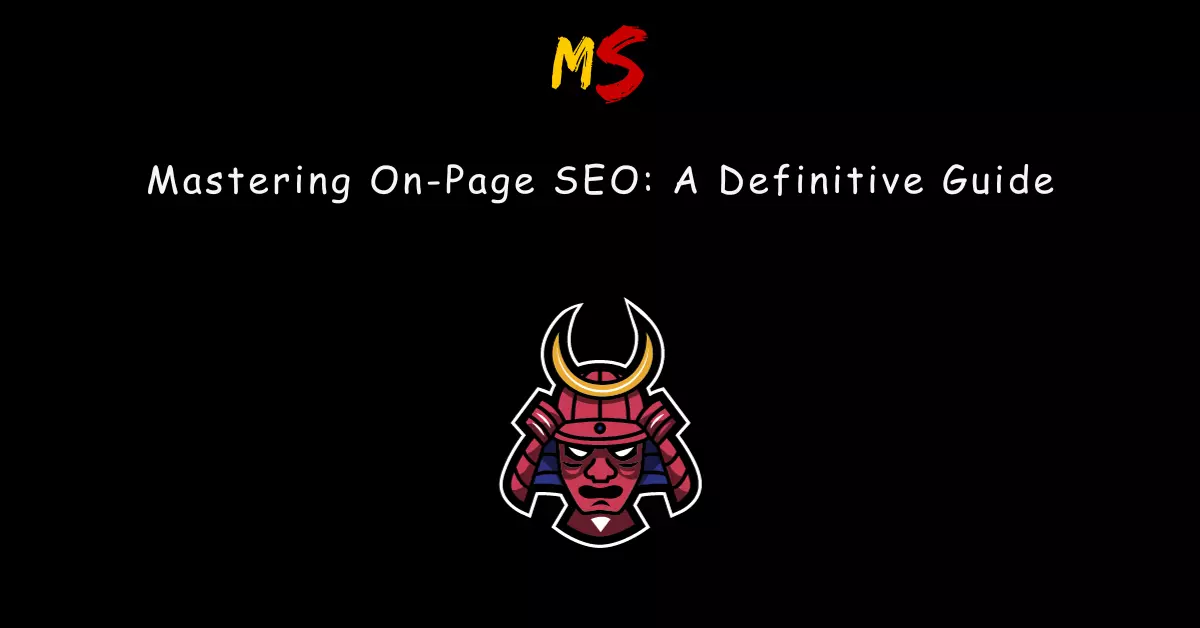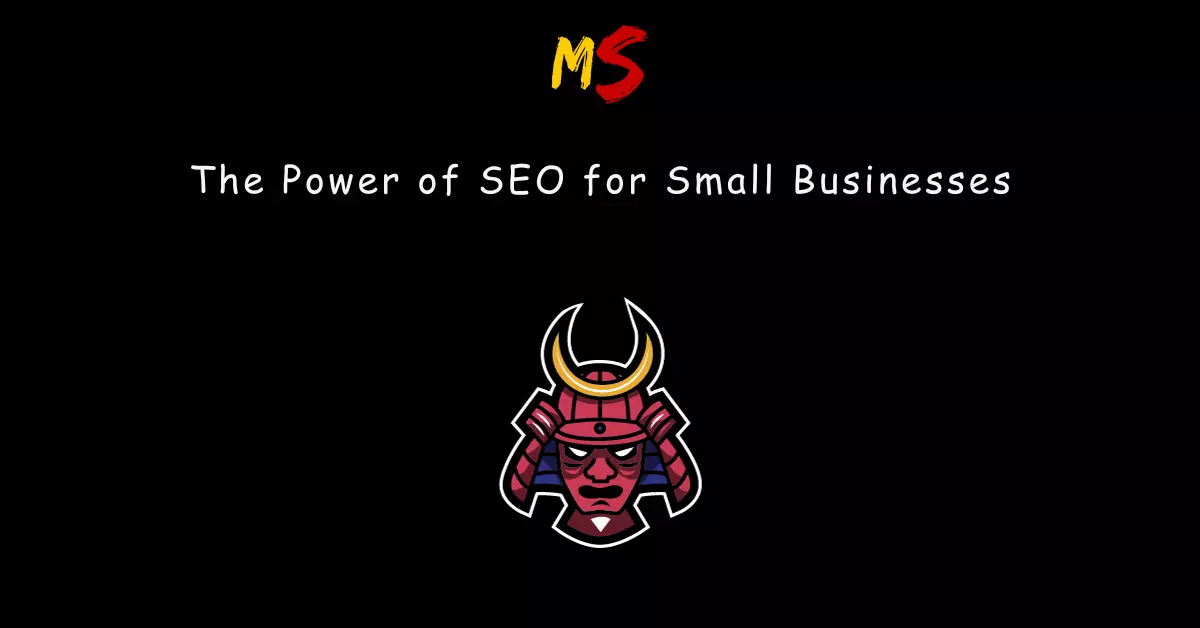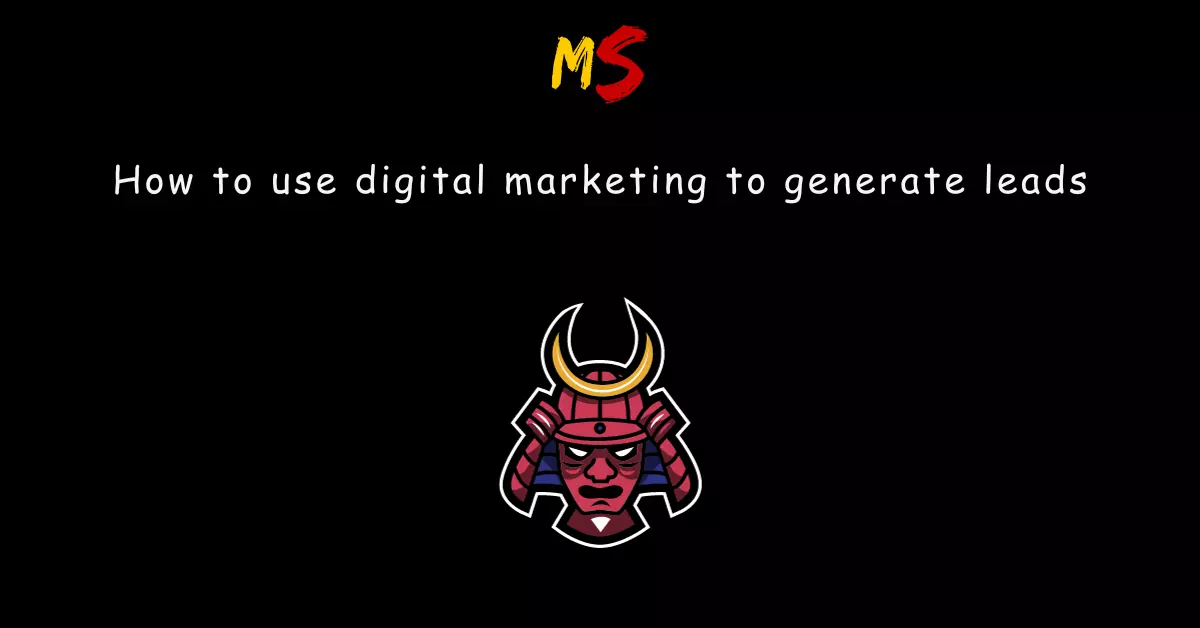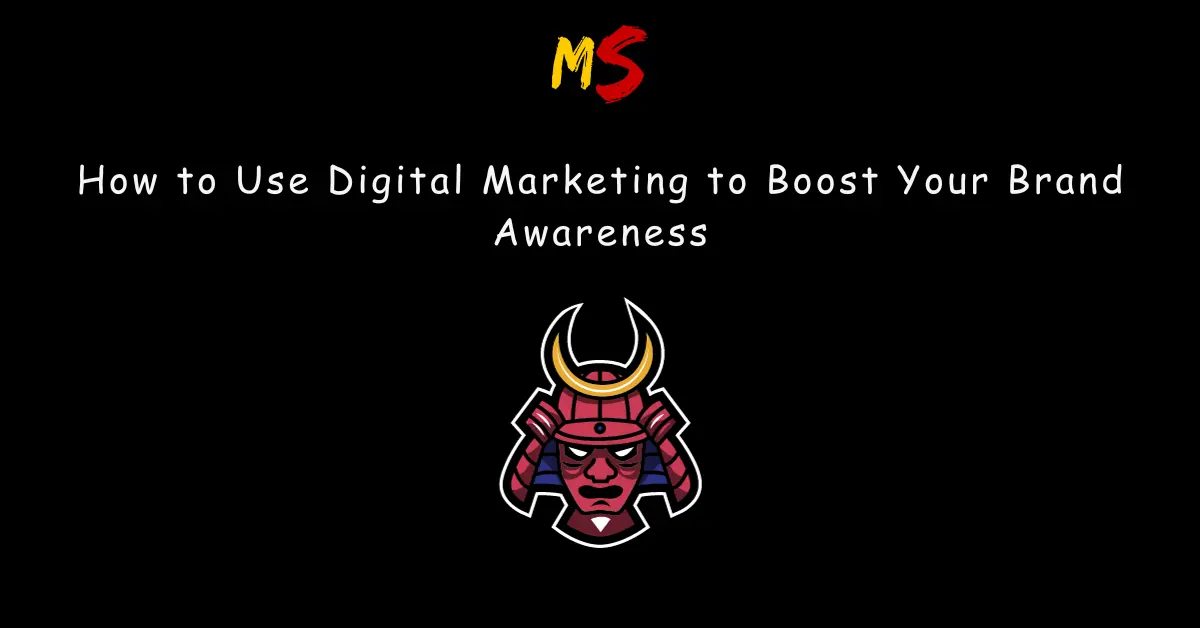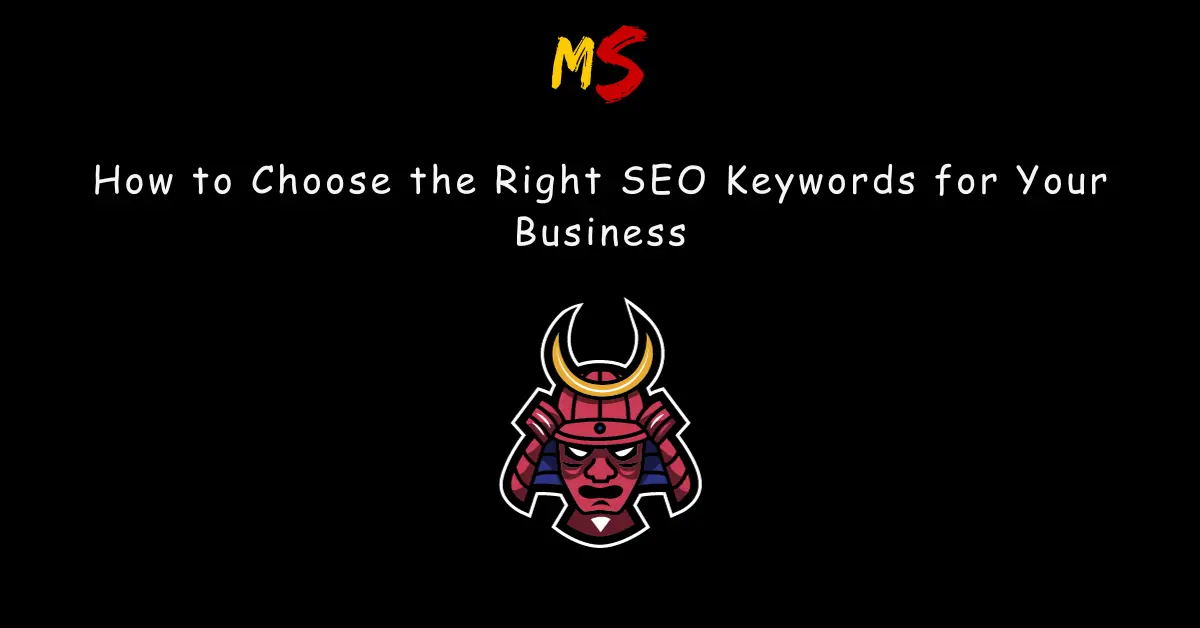Greetings, fellow digital enthusiasts! I’m Yash Setpal, the proud founder of Marketing Senpai, and today as part of my Digital Marketing Blog, we’re embarking on an exhilarating journey deep into the world of On-Page SEO. Whether you’re a beginner or an experienced marketer, I’m here to help you unravel the complexities of On-Page SEO with in-depth explanations, real-world examples, and personal tips that will set you on the path to digital success. So, grab your notepad because we’re diving deep into the world of On-Page SEO, and this comprehensive guide will be your trusty compass.
Understanding On-Page SEO: The Core Foundation
Let’s begin at the beginning. On-Page SEO, in its essence, is the art and science of optimizing individual web pages to boost their search engine rankings. It’s all about making your web content as attractive as possible to both search engines and human visitors. Think of it as the digital curb appeal for your website.
Keyword Research: The Cornerstone of On-Page SEO
Keyword research is the bedrock of On-Page SEO. Think of it as a treasure hunt, where the keywords are your hidden gems. These gems are the terms and phrases people use when searching for information online.
Let’s say you own a fitness blog, and you want to rank for “best home workout routines.” Start your keyword research journey with tools like Google Keyword Planner, SEMrush, or Ahrefs. These tools will provide you with insights into keyword volume, competition, and related keywords.
For instance, you might discover keywords like “bodyweight exercises at home” or “home fitness equipment.” These are your golden nuggets. Incorporate them strategically into your content to boost your chances of ranking higher.
Optimizing Meta Titles and Descriptions: Crafting the Perfect Hook
Now that you’ve unearthed your keywords, it’s time to wield them effectively. Think of your meta title and description as your online storefront sign. They need to be compelling, informative, and irresistible to potential visitors.
Suppose your website is a travel blog, and your target keyword is “best budget-friendly travel destinations.” Craft your meta title to pique interest, like so: “Uncover Hidden Treasures: The Ultimate Guide to the Best Budget-Friendly Travel Destinations 2023.” This title combines intrigue with clarity, enticing users to click for more.
Your meta description should complement the title. For instance, it might read: “Embark on unforgettable journeys without emptying your wallet. Our expert guide reveals the top budget-friendly spots to explore this year.” By aligning your meta description with your meta title and content, you set the stage for a seamless user experience.
Creating High-Quality Content: The Crown Jewel of SEO
Content is not just king; it’s the entire royal court. Google loves content that’s not only well-researched but also engages and educates the audience. When crafting your content, always prioritize quality over quantity.
Imagine you run a tech blog, and you’re reviewing the latest smartphone models. Instead of merely listing specifications, delve into user experiences, conduct side-by-side comparisons, and offer your personal insights. Share real-world examples, user testimonials, and practical tips to enrich your content.
For instance, if you’re reviewing the latest iPhone, don’t just mention the camera’s megapixels—explain how it captures stunning low-light photos by sharing actual pictures taken in challenging conditions. Your goal is to provide a comprehensive resource that readers can trust and learn from.
Internal and External Linking: The Web of Connectivity
Links are the bridges connecting your website’s pages, creating a web of interconnected knowledge. Internal links guide visitors to related content within your website, improving user experience and helping search engines crawl your site effectively. External links, on the other hand, establish your website’s credibility by referencing authoritative sources.
Imagine you have a gardening blog, and you’re writing an article about growing tomatoes. Within the article, link to your previous posts about soil preparation, watering techniques, and pest control—this encourages readers to explore more of your content. Additionally, include external links to scientific studies or renowned gardening websites that support your claims about tomato cultivation.
Optimizing Images and Multimedia: Visual Engagement Matters
Visual content is the spice that adds flavor to your web pages. Images, videos, and infographics can enhance user engagement and improve SEO when optimized correctly.
For instance, if you operate a pet care blog, and you’re including an image of an adorable Labrador Retriever, ensure it’s not labeled as “IMG_1234.jpg.” Instead, name it “labrador-retriever-playing-fetch.jpg” and provide alt text like “Labrador Retriever enjoying a game of fetch in the park.” These details make your content more accessible to search engines and visually impaired visitors.
Mobile Optimization: Thriving in the Mobile-First Era
In an era dominated by mobile devices, your website’s mobile-friendliness is non-negotiable. Google prioritizes mobile-friendly websites in its rankings to ensure users have a seamless experience, regardless of their device.
To optimize for mobile, choose a responsive design that adapts to various screen sizes automatically. Test your website on multiple devices and browsers to ensure everything functions smoothly. A user-friendly mobile experience not only pleases Google but also keeps visitors engaged and coming back for more.
Page Loading Speed: The Fast Lane to SEO Success
Imagine standing in a never-ending line at a store—frustrating, right? Well, that’s how visitors feel when your web pages take forever to load. Google knows this too, which is why page loading speed is a critical factor in SEO.
Use tools like Google PageSpeed Insights to assess your website’s performance and receive recommendations for improvement. Compress images, enable browser caching, and minimize server requests to speed up load times. A faster website not only pleases search engines but also enhances the user experience, reducing bounce rates and increasing conversions.
Content Depth and Length: Going the Extra Mile
When it comes to content, depth and length matter. Google tends to favor in-depth, comprehensive articles over shallow, superficial ones. But what does this mean in practice?
Suppose you’re managing a finance blog, and you’re writing about retirement planning. Instead of a brief overview, delve into the intricacies of retirement accounts, investment strategies, and tax implications. Provide real-world examples of successful retirement plans and personal anecdotes that resonate with your audience.
Aim for articles that surpass the 1,500-word mark, as this often signals to search engines that your content is detailed and valuable. However, don’t pad your content with fluff—every word should contribute to the reader’s understanding.
User Engagement Signals: Keeping Visitors Hooked
Google pays close attention to how users interact with your website. User engagement signals, such as time on page, bounce rate, and click-through rate, provide insights into your content’s quality and relevance.
To keep visitors hooked, format your content for readability. Use headings, subheadings, and bullet points to break up large chunks of text. Incorporate multimedia elements like videos and infographics to make your content more engaging. Encourage social sharing and comments to foster a sense of community and interaction.
Schema Markup: Enhancing Visibility
Schema markup, also known as structured data, is a powerful tool that can enhance your website’s appearance in search results. It helps search engines understand the context of your content and display rich snippets, such as star ratings, event dates, and product prices, directly in the search results.
Let’s say you operate an e-commerce website selling organic skincare products. By implementing schema markup, you can provide search engines with detailed information about your products, including customer reviews, ingredients, and prices. This not only makes your listings more informative but also draws users’ attention, increasing click-through rates.
URL Structure: A Roadmap for Crawlers
The structure of your URLs can impact both user experience and SEO. A clear and logical URL structure helps search engines understand the hierarchy of your content and improves user navigation.
For instance, if you run a recipe blog, the URL for a specific recipe should reflect its content. Instead of a generic URL like “www.myfoodblog.com/article123,” opt for a descriptive one like “www.myfoodblog.com/creamy-chicken-alfredo-recipe.” This not only tells search engines what the page is about but also makes it easier for users to remember and share.
Security with HTTPS: Building Trust
Website security is paramount for user trust and SEO. Google has been prioritizing secure websites by labeling them as “Secure” in the browser bar. This not only reassures visitors but also gives your website a slight ranking boost.
To secure your website, obtain an SSL certificate and migrate to HTTPS. This ensures that data transferred between your website and users is encrypted, reducing the risk of data breaches and hacking attempts. Most web hosting providers offer free SSL certificates, making it an accessible security enhancement.
Regular Content Updates: Staying Relevant
In the ever-evolving digital landscape, keeping your content up-to-date is crucial. Google favors websites that regularly refresh their content with new information, insights, and trends.
Let’s say you manage a fashion blog, and you’ve written an article about “2022 Spring Fashion Trends.” As the seasons change, revisit the article to update it with the latest trends for 2023. Add new images, examples, and style tips to reflect the current fashion scene. By doing so, you signal to search engines that your content is fresh and relevant.
User-Friendly Navigation: Guiding the Way
A well-structured website not only pleases users but also assists search engine crawlers in indexing your pages efficiently. Your website’s navigation menu plays a pivotal role in guiding both users and search engines.
Imagine you have an online bookstore. Your navigation menu should categorize books by genres, authors, and bestsellers. Additionally, include an internal search bar for users seeking specific titles. Clear, intuitive navigation ensures that visitors find what they’re looking for, reducing bounce rates and enhancing user experience.
Voice Search Optimization: Speaking the Language of AI
As voice-activated devices like Siri, Alexa, and Google Assistant become ubiquitous, optimizing for voice search is becoming increasingly important. Voice search queries tend to be more conversational and longer, so adapt your content accordingly.
For instance, if you have a travel blog, consider creating content that answers common voice search questions like, “What are the best family-friendly vacation spots in 2023?” By providing comprehensive answers to such queries, you increase your chances of appearing in voice search results.
Local SEO: Capturing the Neighborhood Market
Local SEO is a game-changer for businesses with physical locations or service areas. It focuses on optimizing your online presence to attract local customers. If you own a brick-and-mortar store, restaurant, or offer local services, mastering local SEO is essential.
Start by claiming and optimizing your Google My Business listing. Ensure your business name, address, phone number, and hours of operation are accurate and consistent across all online platforms. Encourage customers to leave reviews, as positive reviews can boost your local rankings significantly. Additionally, create location-specific content to cater to local audiences.
Monitoring and Analytics: The SEO Compass
To navigate the vast sea of SEO, you need reliable tools and a keen sense of direction. Google Analytics and Google Search Console are your trusty companions on this journey.
Regularly monitor your website’s performance using these tools. Track key metrics such as organic traffic, click-through rates, bounce rates, and conversion rates. Pay attention to the pages that perform well and those that need improvement. Use the insights gained to refine your On-Page SEO strategies continuously.
The Art of A/B Testing: Refining Your Approach
A/B testing, also known as split testing, is a powerful method to refine your On-Page SEO strategies. It involves comparing two versions of a web page to determine which one performs better.
Let’s say you run an e-commerce store, and you want to optimize your product page for conversions. You could A/B test different variations of the product description, such as the length, style, and placement of the call-to-action button. By analyzing the results, you can make data-driven decisions to enhance your conversion rates.
In Conclusion
Congratulations! You’ve embarked on a comprehensive journey through the captivating realm of On-Page SEO. From keyword research to A/B testing, you’ve delved deep into the strategies and techniques that can propel your website to the top of search engine rankings.
Remember that SEO is a dynamic field, constantly evolving with search engine algorithms and user behaviors. Stay informed, adapt to changes, and never stop learning. Implement these On-Page SEO best practices, and you’ll be well on your way to achieving digital success.
As we part ways, keep in mind that SEO is not an overnight magic trick; it’s a long-term investment. The efforts you put into optimizing your web pages will pay off in the form of increased organic traffic, higher search engine rankings, and a more engaged audience.
So, go forth with this newfound knowledge, and may your website rise through the ranks of search results like a true SEO champion. Happy optimizing!

